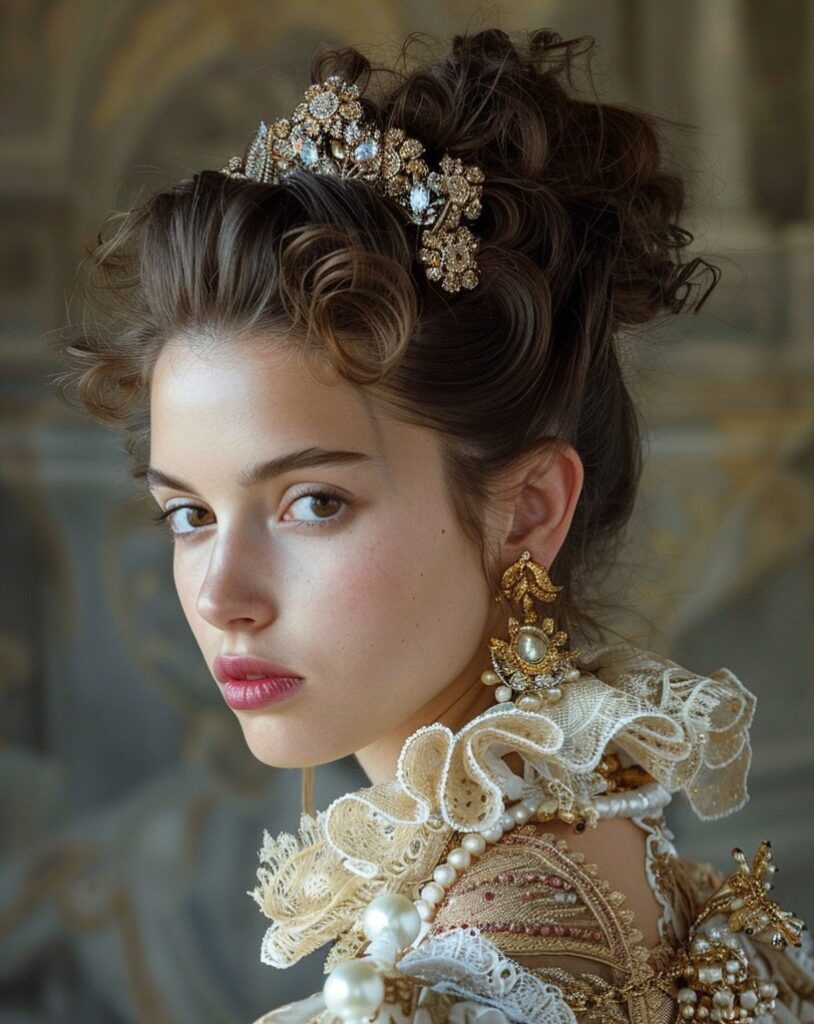Unveiling the Regal Elegance: A Journey into Historical Queens’ Makeup

Step into the majestic world of historical queens, where beauty was not just a reflection but a statement of power, status, and refinement. Makeup rituals of queens throughout history offer a fascinating glimpse into their opulent lifestyles and the evolution of beauty standards across cultures and epochs.

1.The Ancient Queens: In ancient civilizations like Egypt, Mesopotamia, and China, queens adorned themselves with makeup made from natural ingredients. Egyptian queens like Cleopatra famously used kohl to line their eyes, creating a striking and captivating gaze. They also indulged in skincare routines using ingredients like honey and milk to maintain radiant complexions befitting their divine status


2.Medieval and Renaissance Royalty: During the Middle Ages and the Renaissance, European queens favored pale skin as a symbol of aristocracy. They achieved this look by applying lead-based white makeup, which unfortunately led to health issues. Nevertheless, this era saw the emergence of intricate hairstyles adorned with jewels and flowers, enhancing the regal allure of queens like Elizabeth of England.

3.The Age of Enlightenment: In the 17th and 18th centuries, queens embraced a more natural aesthetic inspired by the ideals of the Enlightenment. Makeup became more understated, with a focus on achieving a delicate flush on the cheeks and lips using plant-based pigments. French queens such as Marie Antoinette epitomized this refined elegance with their soft, powdered complexion and rosy cheeks.


4.Victorian Grandeur: The Victorian era ushered in a revival of elaborate beauty rituals among queens and noblewomen. Queen Victoria herself popularized the use of cosmetics, including rouge for flushed cheeks and lipstick for a subtle tint. However, makeup was still associated with theatricality and frowned upon by more conservative circles.

5.Modern Royalty: In the 20th and 21st centuries, queens embraced a more contemporary approach to makeup while maintaining an air of sophistication. Queen Elizabeth II of England, for example, is known for her timeless elegance and signature red lipstick. Meanwhile, modern queens like Queen Rania of Jordan and Queen Letizia of Spain are celebrated for their polished, fashion-forward looks that reflect their roles as global ambassadors.


The history of queens’ makeup is a testament to the enduring allure of beauty and its significance in royal culture. From ancient rituals rooted in mysticism to modern trends influenced by fashion and technology, queens have always been at the forefront of beauty innovation. As we delve into their makeup routines, we uncover not only timeless glamour but also the stories of power, identity, and self-expression that define their reigns
